MileValue is part of an affiliate sales network and receives compensation for sending traffic to partner sites, such as CreditCards.com. This compensation may impact how and where links appear on this site. This site does not include all financial companies or all available financial offers. Terms apply to American Express benefits and offers. Enrollment may be required for select American Express benefits and offers. Visit americanexpress.com to learn more.
Note: Some of the offers mentioned below may have changed or are no longer be available. You can view current offers here.
Part I: The Main Award & Finding a Free Oneway
Part II: US to Asia via Europe for 90k Miles in Business
Part III: Adding a Great Sidetrip
This article is a continuation of the post from last week, discussing getting to Tokyo in business class for only 90,000 US Airways miles. For full details on my original plans that were scrapped, check out the details here.
After putting my New Year’s travel resolutions on paper, I was in line to book a solid roundtrip to Tokyo that included a free domestic oneway from San Francisco to Washington D.C.
Right as I was about to book, I had a change of heart. There were other ways to maximize the award ticket to Asia. I could even check off another travel resolution at the same time!
It was really important to catch up with a friend who is moving to Bulgaria in August. I was hoping a quick stop in Europe would be enough time for us to catch up en route to Tokyo. I started research how to get to Europe with US Airways miles.
What are the best ways to get from Washington-Dulles to Europe on a Star Alliance carrier? Research really isn’t that difficult, and Wikipedia is often your best friend. For more information, check out Scott’s posts Book Awards Like a Pro: Routing Ideas and How to Use Wikipedia to Book Awards Like a Pro.
I jotted down the Star Alliance carriers that served major European cities from Washington-Dulles and began my search on United.com. Of course, I always trick United.com’s Award Calendar to only show me available nonstops. My first search was on Lufthansa to Frankfurt.
Unfortunately, my goal was two business class awards. Lufthansa notoriously holds back their premium cabin award space until the last minute. They want every opportunity to sell the seats at full retail price. My search in October and November yielded almost nothing, as you can see below.
The green dates have business class space, but it’s on United. I wanted to sample as many international carriers as I could on this trip and compare them to the major legacy airlines. United wouldn’t do.
To prove that Lufthansa typically releases award space last minute, I did a cursory check for the upcoming week. As expected, the 21st-23rd of January all had business and/or first class award seats. Scott even wrote up this phenomenon earlier this year in his post, The Poorly Kept Secret to Finding Lufthansa Availability.

My trip unfortunately had quite a few moving parts. I didn’t have the time nor flexibility to go down to the wire in the hope that Lufthansa would release two premium seats. It was time to move on.
The next try was with SAS, or Scandinavian Airlines, which flies nonstop between Dulles <-> Copenhagen. Business class space was decent, but the available dates didn’t match what I needed.
Austrian Airlines has a flight to Vienna, but award space was scarce in the summer months and completely nonexistent after July. That was a dead end.
My non-United options were drying up, so I thought about giving Turkish Airways a try. They run a daily nonstop to Istanbul and their flights between Sofia, Bulgaria and Istanbul are usually inexpensive. Luckily for me, award space was pretty wide open in business.
I wrote down the available dates from Dulles to Istanbul, but I couldn’t lock in my European flight just yet. I still needed to find my Istanbul to Tokyo leg.
The flight schedules didn’t quite mesh, so I would be spending almost a full day in Istanbul before continuing on to Tokyo. My layover was about 23 hours and 10 minutes, but (luckily) didn’t count as a stopover. All the legacy US carriers have a rule in place that on international layovers: under 24 hours is just a layover, but over 24 hours is a stopover. For more info, check out Scott’s post, Anatomy of an Award: 23 Hour Layovers.
Another advantage of flying into Istanbul is that Istanbul to Tokyo is a secret-weapon route. There was premium award space from Istanbul to Tokyo every day in October and November! With that good news in mind, my goal was to book the Istanbul to Tokyo-Narita nonstop on Turkish’s 777-300 aircraft.
If you’ve read Scott’s post Free First Class Next Month: seatguru.com, you know the site is your best friend when researching potential aircraft choices. Turkish’s 777 had fully flat business class seats which would serve us well on the nearly twelve hour flight. Unfortunately, the available dates just didn’t match. I then went to my next best option Asiana.
I had heard rave reviews about Asiana’s food and service. I also had to cancel an award ticket to Bali last year on Asiana, so there was extra incentive to fly with them. Asiana had an itinerary that routed through Seoul with a tight 85 minute connection onto Tokyo. Initially I worried about the tough transfer, reading this FlyerTalk thread, put my fears to rest.
An example of the Europe -> Asia itinerary I chose is below.
From there, finding my flight home was pretty easy. Referencing my previous post, ANA had plenty of dates with a nonstop to Washington-Dulles from Tokyo-Narita. I wrote down all the dates, times, and flight numbers. I was ready to book:
- Washington-Dulles -> Istanbul (23 hour layover) [Turkish]
- Istanbul -> Seoul-Incheon -> Tokyo-Narita [Asiana]
- Tokyo-Narita -> Washington-Dulles [All Nippon Airlines]
My award looked even crazier on the Great Circle Mapper.
Wait, you’re allowed to route to Asia via Europe from the US?
Absolutely! As I explained in my previous post, US Airways uses people to price their awards, not computers. They don’t have stringent routing rules. As long as you are polite, keep the number of segments on your award low, and feed the agent your desired segments, you can get away with a lot.
[Scott: On this routing, you want to make sure you frame the award as Washington to Tokyo roundtrip, routing through Istanbul one way. If it’s framed as Washington to Istanbul roundtrip, routing through Tokyo one way, the award would cost 100k miles.]
When I called to book this award, the agent initially hesitated in routing me through Istanbul. “Um, I’m not sure this is allowed, sir.” I gently suggested that we should try and see what happened. The agent verified with the rate desk and came back with pricing. 90k US Airways miles and $131 per ticket. The $131 consisted of an unavoidable $50 “award processing fee” and approximately $80 in taxes. I quickly booked the ticket with a smile on my face.
Don’t think of my award ticket as the exception, either. Scott has given plenty of examples of the liberal US Airways routing rules. His coup de grace can be found in the post, Anatomy of an Award: South America, Africa, Europe, and North America in Biz for 100k.
Routing to Asia via Europe or from South America to Europe via Africa are just two examples of great US Airways rules. You can also route to Australia or New Zealand via Asia and lower the cost of your award! Scott discussed that great redemption value in his post, US Airways Award Chart Sweet Spot: Australia via Asia.
Recap
US Airways has the most liberal routing rules of the legacy carriers. Starting in North America, you can route to Asia via Europe with ease. The award will still be 90,000 US Airway miles in business, even if you choose to go the long way.
To construct an award, make sure to search segment by segment. In my experience, the transatlantic space is sometimes the most difficult to find. After locking in that piece of the award, you will need to secure space from Europe to Asia and then the return flight from Asia to North America.
Seatguru.com pointed me towards the best flights with lie-flat business seats, but unfortunately those segments didn’t work for me.
The award in this post worked well for my dates. I get to review three international carriers, Turkish, Asiana, and ANA, and have 23 hours in Istanbul to sample the city. Not only will I be able to see my friend who is in Bulgaria, but I will also get to visit Tokyo afterwards. That’s great value for one award!
The final installment of this award will center around adding a quick side trip to Hong Kong.
Just getting started in the world of points and miles? The Chase Sapphire Preferred is the best card for you to start with.
With a bonus of 60,000 points after $4,000 spend in the first 3 months, 5x points on travel booked through the Chase Travel Portal and 3x points on restaurants, streaming services, and online groceries (excluding Target, Walmart, and wholesale clubs), this card truly cannot be beat for getting started!
Editorial Disclaimer: The editorial content is not provided or commissioned by the credit card issuers. Opinions expressed here are the author’s alone, not those of the credit card issuers, and have not been reviewed, approved or otherwise endorsed by the credit card issuers.
The comments section below is not provided or commissioned by the bank advertiser. Responses have not been reviewed, approved, or otherwise endorsed by the bank advertiser. It is not the bank advertiser’s responsibility to ensure all questions are answered.


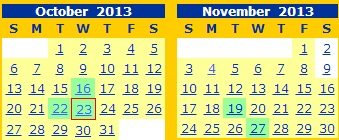
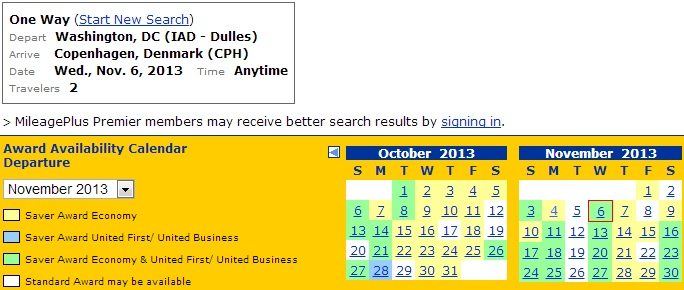
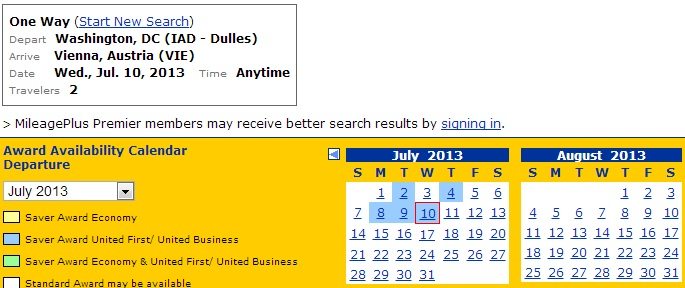
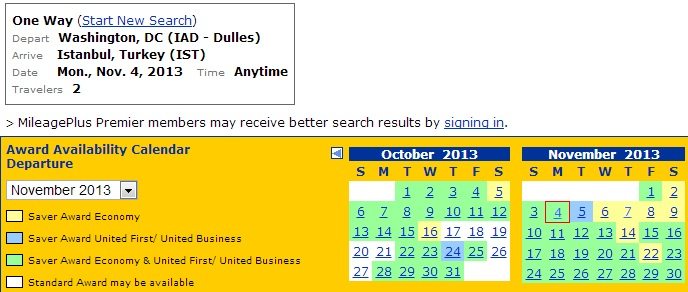
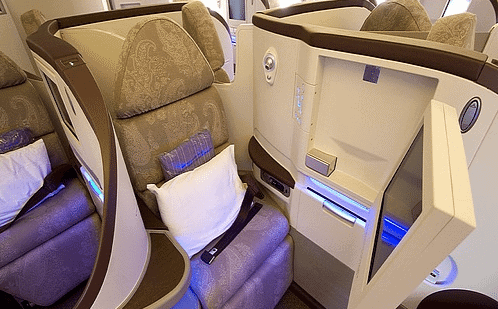


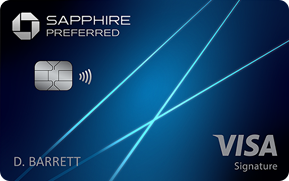
Don’t stress about Lufthansa, unless you’re flying the 747-8, their business class is recliner seats. I wonder if Turkish even has flat beds in biz class?
Btw, why are you going to Istanbul for only 23 hours? You know that you could have gotten a full stopover there.
23 hours isn’t a lot, but I get to share a meal or two with my friend and maximize my time in Tokyo. I held on to the stopover (or open jaw) in case availability changes in the next few months and I can tweak the award to add a free side trip.
you mean you are a premium member of US Airway so you can change the routing later? thanks.
I read a lot of travel blogs, and yours is consistently the most practical and innovative. Keep it up!
By the way, the recaps are really an idea!
What carrier/cabin is the screenshot?
This is a Turkish Airways business class seat on their 777. Screen shot taken from FlyerTalk:
http://www.flyertalk.com/forum/travelbuzz/1043452-flight-istanbul.html
In your opinion, do you think this would’ve worked from LAX?
When dealing with US Airways and keeping the segments low, I think you should be able to.
Seems like TK is friendly to US or Aeroplan rewards, without high YQ also
My friend flew YYZ-IST(long layover also, 23?) then IST-NRT-ICN-TPE, so he got 2 TK 777 in J/C. He even got free wi-fi on YYZ-IST segment, and enjoyed the food, and the IST lounge (fancy lounge, probably best in *A lounges)
I believe that picture is now outdated (it was leased 777 from Jet airways), as new J/C is no 2-3-2 and not fishbone anymore?
http://www.seatguru.com/airlines/Turkish_Airlines/Turkish_Airlines_Boeing_777-300_V2.php
I have a particular distaste for Turkish Airlines. While their “soft” product was very good, the seats (angle flat) on my flights sucked cr*ap. Additionally, while the folks in the air are pretty cool, the ground crew is horrible and they are infamous about not connecting your luggage (based on my convo with a third party contractor who handles baggage claims). I’ll never fly them again and would fly United ANY day of them just for the fact that every time I have had an issue with a United flight, etc. they have compensated me quickly. Turkish? Meh! Good luck.
One goal of this trip is to not check bags, but I’m very interested to see how Turkish stacks up compared to Asiana and ANA, especially when it comes to the seat.
Oh, I should add, I realize some of their planes now have fully flat seats, but it would never convince me to fly them again – ever.
I’ve been able to pull off some pretty crazy stuff with USAirways in the past but recently, I wasn’t able to get any rep to complete this booking:
Charlotte-Las Vegas (stopover)-Maui (open-jaw) Honolulu-CLT
I know that technically USAirways doesn’t allow a stopover and open jaw, but I’d done it before. I called in 3 times, and all 3 times I was told that the computer couldn’t price out the award. First rep told me that I couldn’t stop in Vegas because it wasn’t a hub city for any Star Alliance partners.
Second told me I wasn’t allowed a stopover since it was Zone 1 to Zone 1 trip. Third told me it was because I wasn’t allowed a stopover AND an open jaw. However, the important thing was that none of them were able to get it to price out.
What do you do in a situation like that? I spoonfed them all the flights, they had no problem finding the ones I needed, but then when we got to the end, it wouldn’t spit out a price.
In the end, I ended up canceling the open jaw and keeping the stopover in LAS.
Thanks!
I have never booked a stopover + open jaw award ticket with US Airways. I think the only concrete information you got from their agents came from the third rep. You were wise to scrap the open jaw and keep the stopover. There are plenty of good redemption methods for inter-island Hawaiian flights.
So is US Airway the only carrier that allows free stopover on domestic award ticket? thanks.
Delta does
How do I maximize stop-overs in South America? For example, to Buenos Aires and Rio de Janeiro?
Use one as a stopover and one as a destination. That’s all you’ll be able to do. No other open jaws or free oneways.
If I’m doing a routing of something like ewr-fra-tyo (spending time in Japan), and then on to the USA, do I have to fly out of Tokyo, or am I able to fly out of Nagoya or KIX? Additionally, I’m having problems finding LOT availability from Warsaw to NYC, and Austrian from Vienna to NYC. Is there simply none to speak of for July? Thanks.
You can fly out of Nagoya or KIX, but that is an open jaw meaning you can’t have any stopovers en route. That means the only place you can be for more than 24 hrs is Japan.
I though you were going to add a free one-way, how do you latch a free oneway on this itinerary ?
Thanks for the quick response. I just want to clarify, if I fly out of a Japanese airport other than the one I arrive at, I can still continue on and spend time in Germany, or is that now out? Vice versa, are you saying that if I fly just ewr-fra-tyo-ewr, I can add on a free stopover elsewhere in Asia? Thanks so much!
You get one destination. You’ve chosen Tokyo. You get one stopover or one open jaw. If you choose an open jaw by returning from an airport other than Tokyo, you get no stopovers. A stopover is any layover greater than 24 hours.
Too bad you couldn’t get on Turkish. They offer free tours of Istanbul if you’re on a <24hr layover, including meals, fees and transportation. http://www.istanbulinhours.com/
Awesome tip! That is an incredible option. It looks like it’s free for every cabin and type of ticket too, right?
Is it even possible to fly LAX to SGN on American round trip at saver level? Seems like there’s never a 35k coach trip.
I just booked an award with US Air in first for 120,000 miles. My itinerary is similar:
SFO-FRA-SZG stop
SZG-FRA-ICN destination
ICN-ORD (Asiana suites)
SFO-SFO
I’m thrilled with this, but now I’m thinking I may want to spend a few days in Shanghai and/or Hong Kong. Can I tack one on, or do you recommend booking a separate rt N Asia award? Thanks a mil!
And I love your blog –
If you have Avios, that could be the way to go. A roundtrip ICN HKG on Cathay Pacific would cost 20k/40k Avios + taxes. Otherwise, with your free stopover already being used in SZG, I would book a separate RT N. Asia award using US miles for 25k/30k on Asiana or Thai.
Oops….
I meant ORD-SFO for the last leg.
Thanks for the quick reply. I suspected that’s what I needed to do.
I undertstand the stipulations now! Thanks.
One of my friend told me he redeemed United miles to fly from SFO-Zurich(Stopover)->PEK->SFO. Can you confirmed this routing is allowed for United? thanks.
Your friend told you he did it, then I believe him. I’ve seen similat awards.
[…] Is your suggestion that FlyerTalk should be shut down as well? Also, bloggers have been talking about this for years. You don't really need to hyperventilate over another blog […]
Is it possible to do a stopover in CDG after visiting Asia for 90k biz class? The rep told me it would require 100k since CDG is a highest award zone in the trip so it goes by the rate of that zone.
More and more agents are catching that, but if you call enough, you’ll get an agent who prices it at 90k.
Do we reference the same booking number to price it again? or start all over?
Start all over if you want to pay 90k. That reference number may include a note that the cost should be 100k.
[…] review is a continuation of my fun US Airways redemption that I wrote about back in this post. I tweaked the itinerary slightly in the interim, instead electing to fly nonstop from Washington […]
[…] review is a continuation of my fun US Airways redemption that I wrote about back in this post. I reviewed Turkish Business Class: Washington DC to Istanbul already and had a similar (great) […]
[…] review is a continuation of my fun US Airways redemption that I wrote about back in this post. I reviewed Turkish Business Class: Washington DC to Istanbul and Cathay Pacific Business Class: […]
[…] award to North Asia, and you can even include a stopover in Europe in either direction. I flew one of these itineraries back in October. I was able to fly Turkish Airlines to Istanbul, stopover for a few days, and then […]
[…] 1 round trip business class trip to North Asia–for example Hong Kong, Japan, or South Korea–with 10,000 miles left over. This award also allows a stopover in Europe. […]
[…] Business class awards to North Asia had been under-priced at 90k US Airways miles roundtrip, and many people in this hobby had taken advantage with awards that included a stopover in Europe and Asia in business class. Bill wrote about his experience booking such an award here. […]
[…] of your miles and see multiple destinations on one ticket. For examples, check out my two posts, Anatomy of an Award: US to Asia via Europe in Business Class for 90k Miles and Anatomy of an Award: Nine Segment First Class Award through Europe and […]
[…] review is a continuation of my fun US Airways redemption that I wrote about back in this post. I reviewed Turkish Business Class: Washington DC to Istanbul already and had a similar (great) […]
[…] review is a continuation of my fun US Airways redemption that I wrote about back in this post. I reviewed Turkish Business Class: Washington DC to Istanbul and Cathay Pacific Business Class: […]
[…] 1 round trip business class trip to North Asia–for example Hong Kong, Japan, or South Korea–with 10,000 miles left over. This award also allows a stopover in Europe. […]